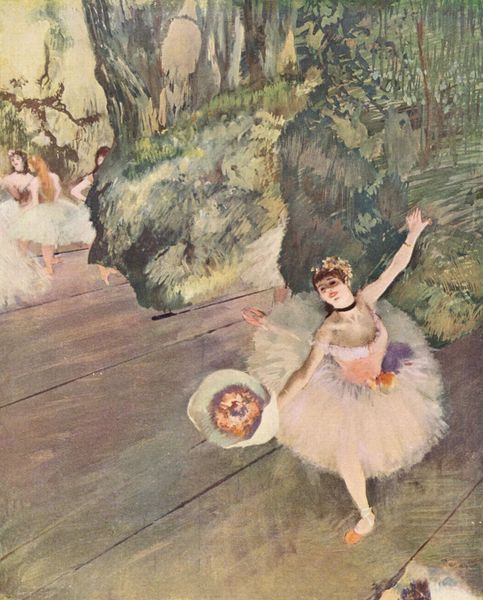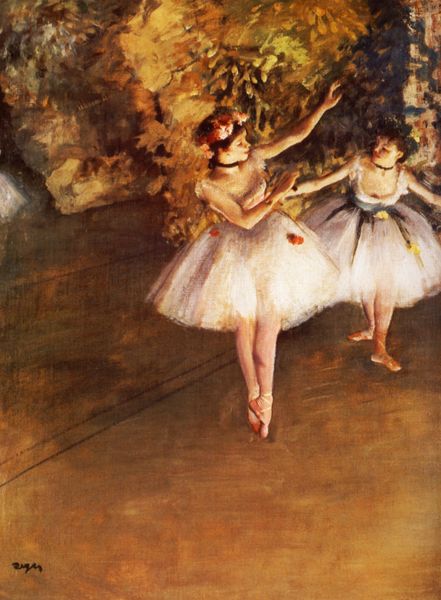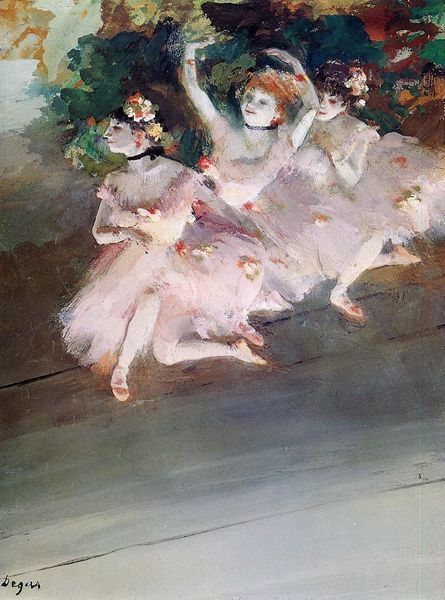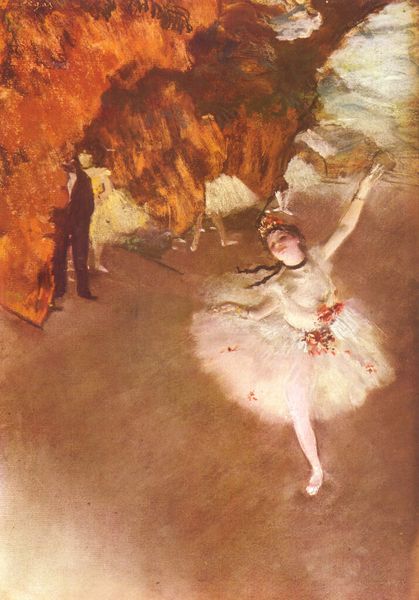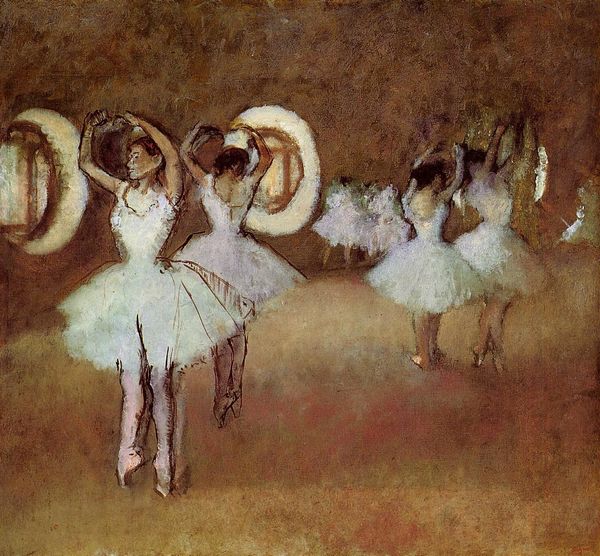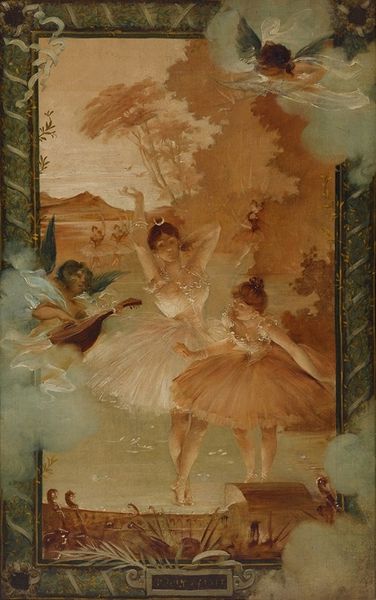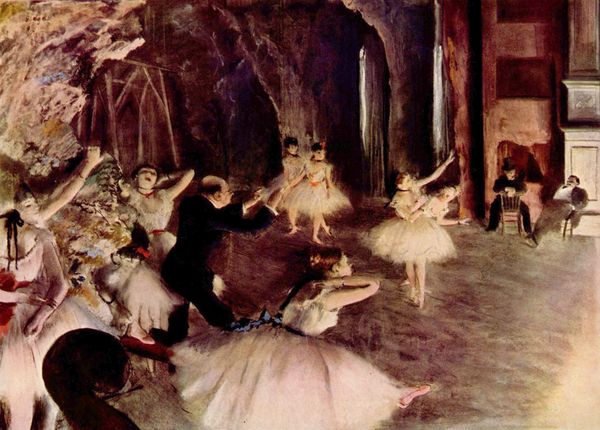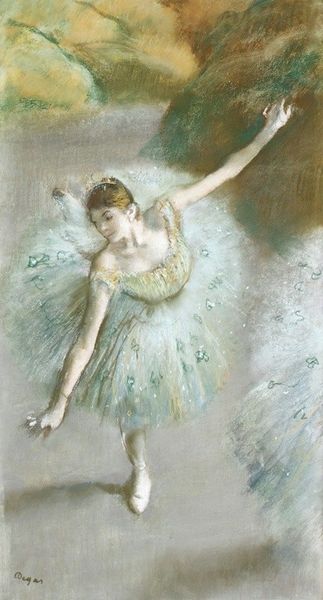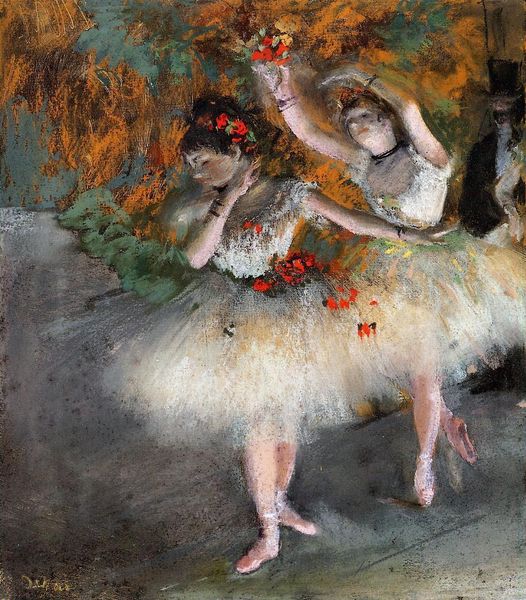
painting, pastel
#
portrait
#
impressionistic
#
painting
#
impressionism
#
impressionist painting style
#
figuration
#
group-portraits
#
genre-painting
#
pastel
Copyright: Public domain
Editor: This is "Ballet Scene" by Edgar Degas, made around 1879, using pastel. It's privately owned. What immediately strikes me is how dreamlike and fleeting it feels, like a memory. The dancers seem to almost dissolve into the background. What do you make of Degas's choices here? Curator: Indeed. Observe how Degas exploits the very properties of pastel to construct this 'fleeting' effect. The soft, powdery pigment, loosely applied, facilitates the blurring of edges and the blending of tones. This technique serves to undermine a clear, defined form, thus mirroring the ephemerality of the performance itself. Do you notice how the composition is structured? Editor: It seems unbalanced. Like a snapshot, cropping some of the figures at the edges. It also feels as though there's much emphasis on shape rather than precise figure. Curator: Precisely. The asymmetry and unconventional cropping, deviating from traditional academic compositions, highlight Degas’s engagement with modernist principles. Further, consider the interplay between the figures and the ground. The ambiguity fosters a flattening of space. Are we, then, looking at representation of dancers or is the artist offering us pure colour, line, texture? Editor: I hadn't considered the abstraction inherent in it, but seeing it that way completely shifts my perspective. The pastel almost seems to be exploring itself as a medium. Curator: Exactly. The subject matter—the ballet—becomes a vehicle for investigating pictorial structure and material properties, underscoring the artist’s formal concerns above representational accuracy. This foregrounding of the medium and composition anticipates later developments in abstract art. Editor: I will never look at another Degas the same way. Thanks. Curator: And my understanding is made richer by your youthful insight, questioning traditional viewpoints.
Comments
No comments
Be the first to comment and join the conversation on the ultimate creative platform.
